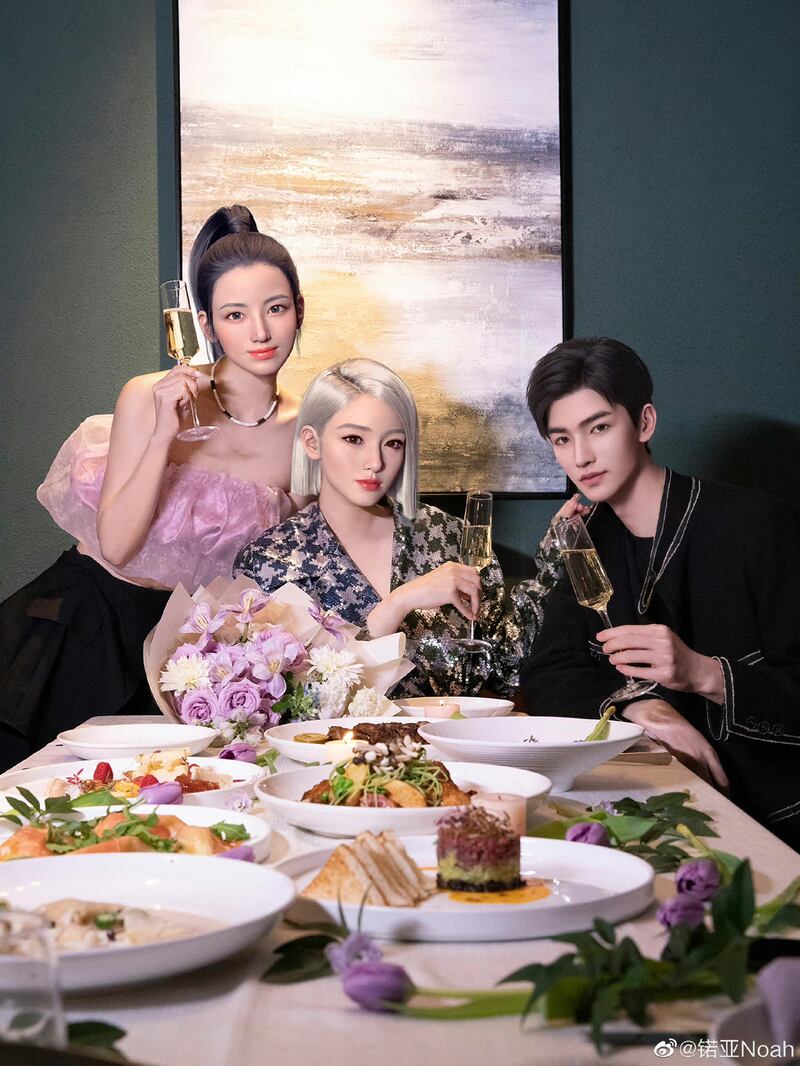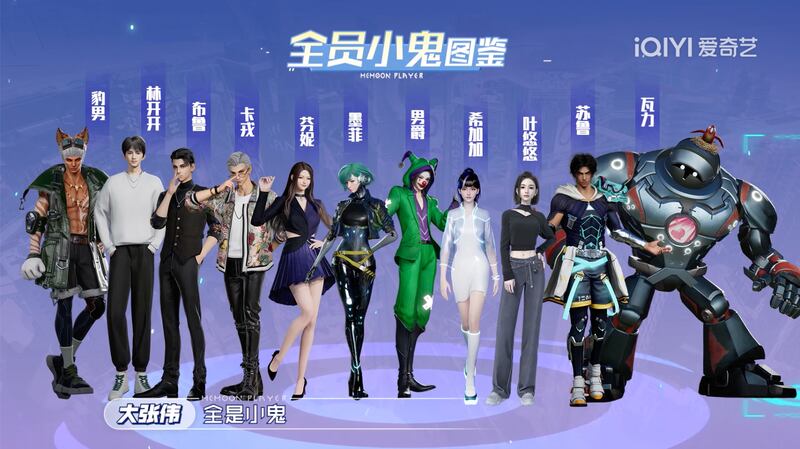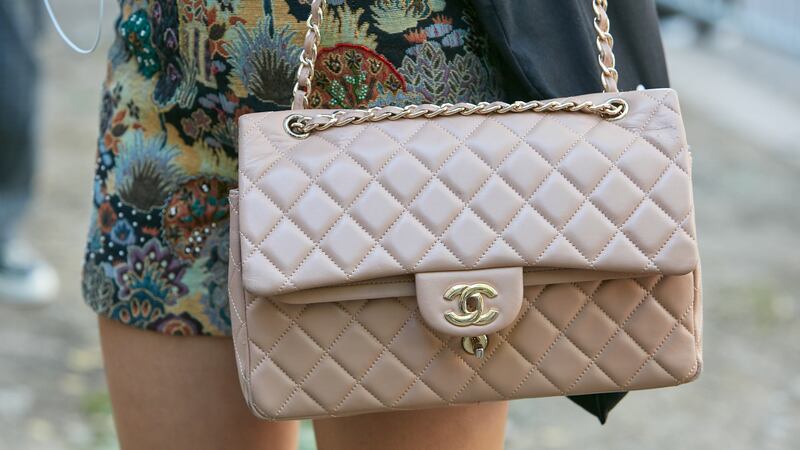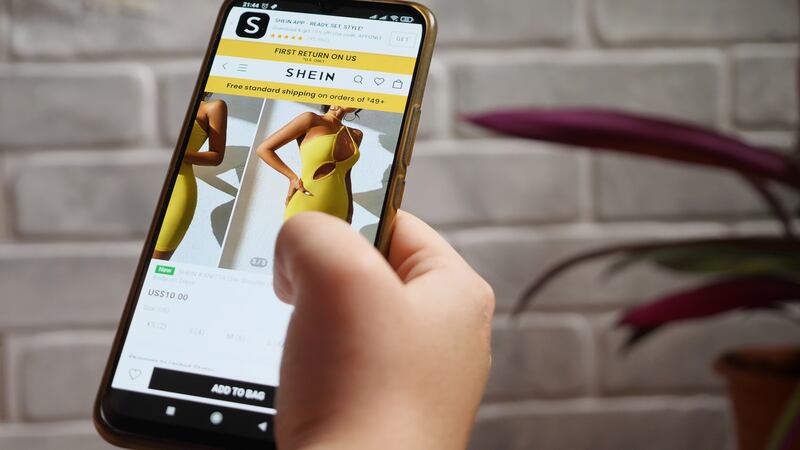
The Business of Fashion
Agenda-setting intelligence, analysis and advice for the global fashion community.

Agenda-setting intelligence, analysis and advice for the global fashion community.

Ayayi looks like any number of aspirational influencers using their personal style to flog a product. For one of her latest gigs — a Lunar New Year campaign for Creed — she sits relaxed in a cable knit jumper holding a sci-fi toy that has been scented by the Anglo-French perfume brand. But despite her natural pose, persuasive pout and lifelike gaze, Ayayi isn’t alive. This hyper-realistic virtual influencer has been brought to life by Chinese tech giant Alibaba.
Whether they use digital or physical KOLs (‘key opinion leaders,’ as influencers are known locally), brands usually have similar marketing objectives in mind. So far, Creed says that it has been impressed by the buzz generated from this campaign, which was originally planned as a China-only launch but ended up rolling out internationally before being extended for Valentine’s Day. Chief executive Sarah Rotheram says the multi-platform release on Tmall, Poizon, Xiaohongshu and in-store is performing “very well.”
“For this specific … phygitally concepted project … it made absolute sense for us to work with a VI (virtual influencer) such as Ayayi,” said Rotheram. “She’s the epitome of an aspirational Gen-Z: living her life to the full and paving her own way in the world, on her own terms.”
Ayayi was created in 2021 in collaboration with Ranmai Technology, but it is Alibaba Group that manages her partnerships through its digital marketing arm Alimama. Ayayi’s official pages on social media platforms Weibo and Xiaohongshu have so far amassed a following of 880,000 and 126,000 respectively and she has featured in campaigns on both platforms as well as Douyin. The virtual influencer clearly has a growing fanbase but how attractive is she for fashion brands looking to boost their bottom line?
ADVERTISEMENT
Prada, Louis Vuitton and Burberry are among the brands that have already “collaborated” with her, according to Alibaba. “We want virtual idols to help brands with the digital upgrade and reach out to younger consumers,” Rocker Hu, manager of Alimama, said in a statement ahead of the group’s latest Singles Day shopping festival.
Other virtual spokespersons joining Ayayi at Alibaba include Dong Dong for the Beijing Winter Olympics, Timo, a male digital idol who made his public debut on the Tmall Luxury Pavilion in 2022 and Noah, another digital creation launched in May by Alimama.
Janet Wang, general manager of Tmall Luxury and vice president of Alibaba’s B2C retail business, maintains that to create virtual idols like these, you need to fully understand the target group. Timo’s image was derived from consumer insights from the platform and Noah’s was developed from Weibo customer surveys.
This feedback loop demonstrates a receptive consumer base. What’s more, the pandemic has only accelerated the growth of interest in virtual influencers in China, where digital-first initiatives have created an audience especially open to new forms of integrated entertainment.
Experts like Aaron Lau, chairman of Gusto Collective, a company creating so-called “metahumans” based between Hong Kong and Shanghai, argue that this means computer-generated characters which exist entirely online are the next logical step for brands looking to connect with consumers.
Once this inevitability is compounded by the complexity of local celebrity and fandom culture, avatars can be seen as a “safer option” than some of the real-life muses used by brands in China, he added.
The origins of Chinese virtual influencers like Ayayi lie in digital beings created over ten years ago in the ACG (anime, comics, games) industry. Luo Tianyi, an anime-style vocaloid developed in 2012 by Shanghai Henian Information Technology, was an early incarnation. With now over five million Weibo followers, Luo has partnered with Chinese cosmetics brand Pechoin and hosted a livestream with the real-life host Li Jiaqi.
The sector has grown substantially since then. By 2021, China’s virtual influencer industry was estimated to be worth $960 million, according to iMedia research. Trend research agency WGSN predicts that by 2030, China’s VI market will be worth in excess of $42 billion, representing a significant share of the broader $530 billion global market.
ADVERTISEMENT

Tom Nixon, co-founder of China marketing platform Dao Insights, explained that a prime growth driver of virtual influencers is China’s tech-savvy younger generation. “Brands are leveraging digital ambassadors to connect with these digital natives who also place high value on the virtual world for both digital goods and virtual representation,” he said.
Though countries like China, along with Japan and South Korea, offer fertile ground for the development of VIs, the trend is certainly not limited to Asia. US retailer Pacsun tapped Miquela last year and Dior partnered with Noonoouri, one of the earliest examples, in 2018. Prada developed its very own digital muse Candy in 2021 and British retailer Marks & Spencer debuted its model Mira a year later.
In China, the government’s support for the sector has been another significant factor in its uptake. The Action Plan for Promoting the Innovation and Development of the Digital Human Industry (2022-2025) outlined a commitment to the growth of the digital human industry.
The term “metaverse” is now a top buzzword in the discussions of lawmakers and political advisors despite the government’s development of a separate blockchain infrastructure driven by a ban on cryptocurrency. Beijing’s recent U-turn on some aspects of web3 means municipal governments are increasingly recognising the potential of innovations such as digital collectibles even as conventional NFTs remain restricted.
One reason the government may be keen on virtual influencers is that they are seen to be part of a solution to a problem identified by the political leadership.
The latest 20th National Congress suggests there is no end in sight for Beijing’s continued crackdown on the entertainment industry and ongoing scrutiny of the moral codes of celebrities. Scandals have toppled the careers of many, making human personalities a risky investment for companies hiring them as ambassadors and models. Associations with a tainted muse can lead to PR disasters and, at worst, blacklisting.
In addition to clearcut cases like that of Kris Wu, which saw Louis Vuitton and other luxury brands sever ties with the pop singer in the lead-up to his conviction for rape, other examples demonstrate increasingly diverse and complex challenges facing brands engaged with celebrity ambassadors in China.
The livestream star Li Jiaqi, whose endorsements of beauty brands is said to help products sell out, mysteriously disappeared for several months last summer after he produced a tank-shaped cake live on air ahead of the anniversary of the 1989 Tiananmen crackdown. He only resurfaced in September.
ADVERTISEMENT
And when netizens called for actress Yuan Bingyan to be banned for allegations of tax evasion, Dior removed any associated content from its social media channels. A similar scandal surrounding Fan Bingbing saw the red-carpet favourite go into exile for two years before she was eventually reunited with brand partners like Guerlain.
Celebrities can also complicate things for brands in other ways. Tommy Hilfiger, H&M, Nike, Adidas and Burberry were among the many brands that saw 50 Chinese celebrity ambassadors publicly quit, following a public outcry in China about the brands’ stance against the use of Xinjiang cotton.
Given this precarious backdrop, Nixon says that “flawless virtual idols have become a more reliable way for brands to leverage fan psychology and engage their target audience.” Indeed, animations are usually free from the failings of vice and political transgressions — and totally under a CEO’s control.
“They stay on point and don’t have issues such as going off-brand,” observed Patrik Wilkens, vice president of global operations at media company TheSoul Publishing, which created digital popstar Polar.
But can virtual influencers really compete in terms of reach and engagement? While Polar recently performed to 2.2 million viewers in the metaverse, many digital influencers have less traction due to far smaller followings. That can impact their credibility with clients looking for a powerful marketing vehicle.
When real-world idol Xiao Zhan, the face of Gucci, posts brand-related content, millions like and repost it. The same can’t yet be said for computer-generated stars like Alice, Reddi, Chuan, Ling or Vince. During Ferragamo’s ‘A New Dawn’ campaign in November 2022, Ayayi’s post fared comparatively poorly compared to that of Zhou Keyu, a member of the boyband Into1. The latter’s announcement on Weibo earned over one million reposts for the Italian house compared to around six hundred for Ayayi.
Then there’s the issue of the “uncanny valley,” the theorised relationship between how much an object resembles a human being and our emotional response to it. Though some virtual influencers are deliberately exaggerated representations or cartoons of human beings, the success of most used by fashion brands seems to be a factor of their ability to be anthropomorphised.

Many companies get it wrong due to a lack of expertise and “a disconnect between...the developers of metaverse influencers [who] generally have no exposure to anything other than games [and] brands [who] have no access to games and may only understand say, Instagram. These things are diametrically opposed, where one is mechanical and one is social,” metaverse and gaming expert Kelly Vero explained, citing the digital star Miquela as one “lacking in personality and humanity.”
Other complaints levelled against virtual influencers are that they are anodyne, unspontaneous or inauthentic compared to human models and muses and that they represent a creepy introduction to what some see as a dystopian future for the fashion industry.
Yet some virtual influencers have demonstrated an ability to monetise the connections between a brand and its customer base, according to representatives of Alibaba. Timo has collaborations with brands like Moncler and Boss and his involvement has, Wang said, “led to strong sales of the items worn.” Noah’s appearance in a livestream for Tommy Hilfiger led to a near quadrupling of the daily gross merchandise value generated compared to an average livestream session.
But not everyone is convinced by virtual influencers with some questioning their return-on-investment (ROI).
Andrew Atkinson, director of insights and research at digital marketing agency China Skinny suggests that, as most influencers in China have been created by deep-pocketed tech companies, the cost could be prohibitive to all but the biggest fashion and beauty brands. Vero confirmed that initial development costs for a virtual influencer in the luxury sector can be “upwards of $250,000 with additional updates costing extra.”
The biggest tech players do seem to have the upper hand. Last year, Chinese search engine Baidu held a conference unveiling plans for the mass production of virtual beings. Meanwhile, agencies from tech platforms such as Bilibili and Xiaohongshu are reportedly contemplating developing VIs and, according to the Financial Times, Tencent and ByteDance (the parent company of TikTok and Douyin) spent hundreds of millions of dollars in 2022 investing in companies that develop digital influencers.
Atkinson disclosed that a company he knows has been creating a virtual influencer for a luxury brand for nine months. “My worry is that when you create someone with that lead-in time and investment, will you get the ROI long-term? Keep in mind that Chinese consumers are used to novelty and have very high expectations. When these metahumans debut, they tend to peak [relatively quickly]. But how do they maintain their relevance?”
For non-luxury categories, there are other options. Baidu’s head of virtual people and robotics Li Shiyan told CNBC that costs have dropped by 80 percent since 2021. Does this mean we’re likely to see companies like Shein roll out a host of virtual influencers? Given their lack of seasonality and need for rapid manufacturing turnarounds, Vero thinks it’s “very likely.” For other players, less so.
This all begs the question: How does a brand know whether it’s right to leave physical influencers behind in a market where the stakes are so high? Or is it more realistic to ask how much a brand should devote to virtual influencers as an add-on to complement its existing constellation of real influencers, models and celebrity stars?
Wang remarked that “some fashion lines are already launching their own branded virtual idols, alongside human KOLs, to diversify their influencer portfolio in China.” Local beauty brand Florasis launched their influencer in 2021 and L’Oréal has Mr Ou and Miss Lai. “What’s more, celebrities and KOLs have their own digital doubles,” Wang continued, referring to the concept of virtual twins that has already been trialled by Angelababy at Shanghai Fashion Week.
For all their hype, virtual influencers are beginning to have a measurable material effect on some shoppers’ experiences. According to Forrester, a fifth of B2C brands in China will use digital idols for that reason in 2023.
This is also a prediction that chimes with recommendations by Michael Zakkour, founder of retail consultancy 5 New Digital, who thinks virtual influencers have “moved from novelty to table stakes” in China. Zakkour urges big brands in fashion and beauty to see investment and development as a “do now” initiative but suggests that the scale, pace and direction of those actions are essentially “dependent on how forward-looking” the company is.
For high street labels, for example, he thinks virtual influencers are a “cost-effective way to reach a large and engaged audience.” They eliminate the need for expensive real-world photoshoots and logistical headaches — or as Vero puts it, “you can create an avatar of a star easier than putting them on a plane”.
All brands will need to be vigilant about designing virtual influencers for China’s unique market environment and adhering to the country’s ever-changing tech regulatory environment.
For labels on the fence, Lau said it would be “remiss for brands to overlook this trend altogether.” He recommended trying out “a smaller-scale social media campaign” to test out how virtual influencers can contribute to the brand’s initiatives.
While they may not be right for every brand, the significance of virtual influencers is growing ever more real. Wang points out that so-called metahumans are “an important part” of Alibaba’s metaverse innovation story and expects fashion brands to move their efforts beyond the use of digital beings in marketing and employ them as “customer service agents, live streamers and support staff.”
All this may sound overwhelming to some players but where the country’s pioneering tech giant goes, brands selling on its platforms would do well to at least listen — if not follow suit.
THE LATEST NEWS FROM CHINA
by Annachiara Biondi
时尚与美容
FASHION & BEAUTY

China’s Luxury Market Declines 10 Percent in 2022
According to a new report by consultancy Bain & Co, the Chinese luxury market shrank 10 percent in 2022 from a year earlier as Covid-19 restrictions and an economic slowdown hit consumer spending. The decline follows five years of strong growth in the market, which between 2019 and 2021 doubled in size to 471 billion yuan ($73.59 billion). All luxury categories were affected, with fashion sales declining 15 percent to 20 percent, sales of jewellery and leather goods contracting 10 percent to 15 percent, and watch sales falling 20 percent to 25 percent. Following the dismantling of China’s strict Covid-zero policy in December, luxury consumption is expected to resume, with a return to 2021 sales levels between the first and second half of 2023. (BoF)
Kering CEO Returns to China, Other Luxury Executives to Follow
Kering CEO François-Henri Pinault, together with Balenciaga CEO Cédric Charbit and Saint Laurent CEO Francesca Bellettini, were among the first luxury executives to return to China at the beginning of February, after the government lifted travel restrictions at the end of last year. During his visit, Pinault visited Shanghai, Beijing, Chengdu and Nanjing, meeting with local government officials and retail landlords, as well as visiting Kering brands’ stores. Pinault, Charbit and Bellettini are expected to be eventually followed by the executives of Kering’s other brands, as well as leaders from rival groups such as LVMH, Richemont, Tapestry and Capri Holdings. (WWD)
Baozun names Wing Xiao CEO of Gap Greater China
Wing Xiao, previously global CEO of Italian brand Miss Sixty and currently head of operations at Baozun Brand Management, was appointed as CEO of Gap Greater China with immediate effect. Xiao’s appointment follows the completion of the proposed acquisition of the American retailer’s Shanghai subsidiary by e-commerce operator Baozun, one of China’s largest providers of brand management solutions, which was first announced in November for between $40 and $50 million. On Feb. 1, Gap Greater China became part of the Baozun group, which now runs Gap’s operations in Mainland China, Hong Kong and Macau. (Press Release)
Actress Dilraba Dilmurat is Dior’s New China Ambassador
Actress Dilraba Dilmurat, known in Chinese as Dilireba, was appointed Dior ambassador in China, The French luxury brand cast the Chinese celebrity of Uighur origin in its latest Lady 95.22 campaign together with Nigerian writer Chimamanda Ngozi Adichie, British tennis champion Emma Raducanu and Italian journalist and model Beatrice Borromeo. The campaign, shot and directed by Brigitte Lacombe and Tess Ayano, was widely shared by Dior on multiple social channels, including Instagram, Twitter, Snapchat, Youtube and Pinterest. (Dior)
消费与零售
CONSUMER & RETAIL

Luxury Pop-ups Lure Domestic Tourists
After years of movement restrictions, Chinese tourists are embracing travelling again, prioritising domestic resort destinations and outdoors activities, two trends that can be leveraged by luxury brands by investing into creative pop-up experiences in popular destinations. One of the most recent examples is Dior’s ice pop-up at Lake Songhua Resort, a ski resort in Jilin province, which replicated the French brand’s 30 Avenue Montaigne store in Paris in ice, as well as offering a limited-edition ski collection, a coffee shop and a light show. The spot became a popular backdrop for photos on social media platforms during the Lunar New Year holiday. The Songhua pop-up follows a successful collaboration between the French luxury brand and the Edition Hotel in Sanya last year and other popular brand activations in destinations such as Aranya. (Jing Daily, Business of Fashion)
Hope for Hong Kong Retail as Restrictions with Mainland End
On Feb. 6 all remaining restrictions between Hong Kong and mainland China were scrapped, ending existing quotas and mandatory Covid-19 pre-departure tests. Group tours between the mainland and Hong Kong also resumed, bringing hope to the financial hub’s retail businesses, which experienced yet another drop in sales in 2022, reflecting a 0.9 percent year-on-year decrease to HK$349.9 billion (US $44.6 billion). According to The Hong Kong Retail Management Association, Hong Kong retailers expect sales to grow between 10 and 40 percent in the first quarter of 2023, with more recovery materialising in the second half of the year. Luxury mall K11 Musea already reported positive figures for January, with sales increasing 28 percent over a year earlier. Hong Kong is also hoping to attract international tourists by giving away 500,000 free airline tickets through its “Hello Hong Kong” initiative, starting on Mar. 1. (Reuters, South China Morning Post)
Duty-Free Sales in Hainan See Double Digit Growth During Lunar New Year
Sales at the 12 offshore duty-free shops in Hainan increased 21 percent to 2.6 billion yuan ($380 million) during the seven-day Spring Festival holiday in 2023 compared to the same holiday period a year earlier. The island reported 157,000 shoppers of duty-free products between Jan. 21 and Jan. 27, an increase of 9.5 percent from last year, with an average spend of around 10,000 yuan per shopper ($1469). The island province welcomed 6.4 million tourists during the Spring Festival holiday. (Retail in Asia)
China’s Online Sales Increase, Retailers Eye International Expansion
According to the National Bureau of Statistics, online retail sales in China increased 4 percent in 2022 to 13.8 trillion yuan ($2.04 trillion), powered by the central and northeast regions and livestreaming activities. Cross-border e-commerce also expanded, growing 9.8 per cent year on year to 2.11 trillion yuan (around $310 million). With a solid user base at home and in Southeast Asia, many Chinese online retailers are now launching new platforms in Europe and North America to offset slowing user growth in China, including Alibaba Group’s Miravia, which launched in Spain in December, and Pinduoduo’s Temu, which has ambitions to rival Shein in the US. (Fibre2Fashion, Nikkei Asia Review)
科技与供应链
SUPPLY CHAIN & TECH

US Senators Probe Shein on Cotton Origin
Republican Senator Bill Cassidy and Democrat Senators Elizabeth Warren and Sheldon Whitehouse wrote a letter to Shein CEO Xu Yangtian asking the ultra fast-fashion company to clarify its supply chain process and links to Xinjiang. The letter, which gives Shein 30 days to respond, follows a November report by Bloomberg in which lab tests showed that garments ordered from Shein were made of Xinjiang cotton. Since June 2022, the US Uyghur Forced Labor Prevention Act bans all imports made in Xinjiang as well as goods made outside the region but linked to Xinjiang companies. Shein said third-party agencies will conduct unannounced audits of its supplier facilities. (BoF)
Xiaohongshu Integrates Blockchain to Expand Web3 Capabilities
China’s social media platform Xiaohongshu has integrated a permissionless blockchain called Conflux Network that will allow users to showcase NFTs on their profile page in the section called ‘R-Space’, which is used to distribute digital collectibles. Conflux describes itself as the only regulatory-compliant public blockchain in China and has already collaborated with the city of Shanghai and McDonald’s China. The link-up with Xiaohongshu, which boasts 200 million active monthly users, is expected to popularise the use of NFTs in the market. WeChat recently showed Web3 capabilities ambitions with the beta testing XR-Frame, an extended reality application solution. (The Defiant)
Luxury E-commerce Secoo Explores ChatGPT-related Technology
On Feb. 6, Chinese luxury e-commerce platform Secoo announced it will explore the integration of ChatGPT-related technology, including the use of AI-generated content (AIGC), to create video content and product descriptions, as well as offering interactive conversations with consumers. The company hopes the technology will improve conversion rates as it struggles to compete with rivals such as JD.com and Alibaba’s Tmall. Secoo’s losses grew from 39.8 million yuan ($5.9 million) in the first half of 2021 to 817 million yuan ($120.5 million) in the first half of 2022. Active users declined 28 percent. (Pandaily, Press Release)
政治,经济与社会
POLITICS, ECONOMY & SOCIETY

US-China Tensions Grow Over Spy Balloons
The discovery of a Chinese surveillance balloon flying across North America in early February further damaged the already sour relations between the US and China, leading US secretary of state Antony Blinken to cancel his much-anticipated visit to the People’s Republic of China. Blinken said the balloon was an “irresponsible act” and a “clear violation of US sovereignty and international law”. China has maintained that the balloon was a civilian meteorological machine that had strayed off course, but according to the Biden administration the balloon is part of a global surveillance programme by the Chinese military. Roughly a week after the first balloon was shot down off the coast of South Carolina, three other unidentified objects were discovered flying over North America and shot down. (New York Times, Financial Times, CNN)
US-China Trade Hits Record $690.6 Billion
Despite growing political tensions and a trade war initiated by former US President Donald Trump in 2018, imports and exports of goods between the US and China in 2022 reached a new record, growing to $690.6 billion. The previous record was $659 billion in 2018. According to a report from the US Bureau of Economic Analysis, exports to China increased by $2.4 billion to $153.8 billion, while imports from China rose $31.8 billion to reach $536.8 billion. (BBC)
China’s Factory and Service Activity Begins to Recover
China’s official manufacturing purchasing managers’ index (PMI) grew to 50.1 in January, expanding for the first time since September as the country’s reopening brought factories back to work. The Caixin/S&P Global services purchasing managers’ index (PMI) also rose to 52.9 in January, ending a four-month contraction period. While recovery is still underway, the results brought business confidence to a 12-year high. (Reuters, CNBC)
EU Criticises Beijing Over Government Subsidies
Ursula von der Leyen, president of the European Commission, said the EU should step up its measures to counteract government subsidies given by the Chinese government to domestic companies in a wide range of sectors, including photovoltaic solar panel manufacturing and electric vehicles. Von der Leyen compared the US Inflation Reduction Act (IRA) with its $369 billion green plan to woo green technologies with China’s system of “hidden subsidies”, explaining that while the first was transparent and easy to deal with, the latter had proved more challenging, limiting access to the Chinese market and causing issues with intellectual property rights for European companies. A spokesman for the Chinese embassy in Brussels said her remarks were “untrue”. (Financial Times)
China Decoded wants to hear from you. Send tips, suggestions, complaints and compliments to robb.young@businessoffashion.com.
With consumers tightening their belts in China, the battle between global fast fashion brands and local high street giants has intensified.
Investors are bracing for a steep slowdown in luxury sales when luxury companies report their first quarter results, reflecting lacklustre Chinese demand.
The French beauty giant’s two latest deals are part of a wider M&A push by global players to capture a larger slice of the China market, targeting buzzy high-end brands that offer products with distinctive Chinese elements.
Post-Covid spend by US tourists in Europe has surged past 2019 levels. Chinese travellers, by contrast, have largely favoured domestic and regional destinations like Hong Kong, Singapore and Japan.